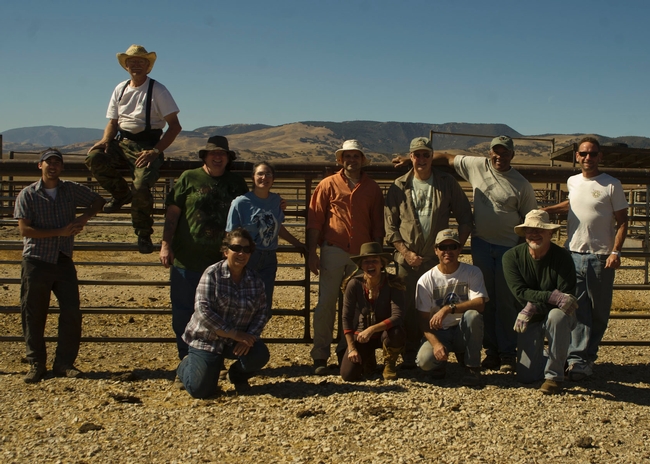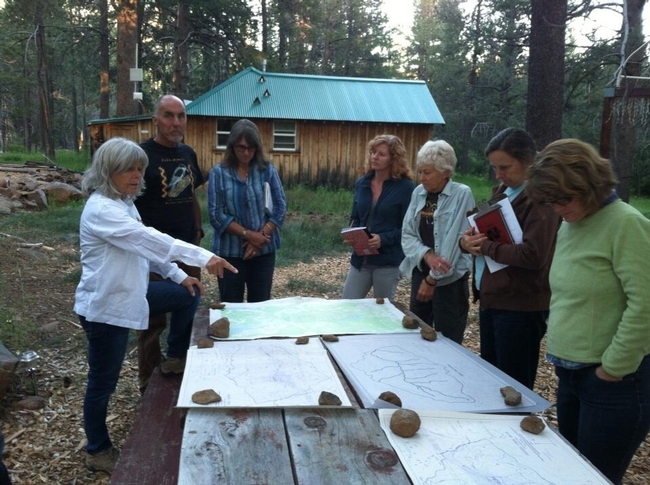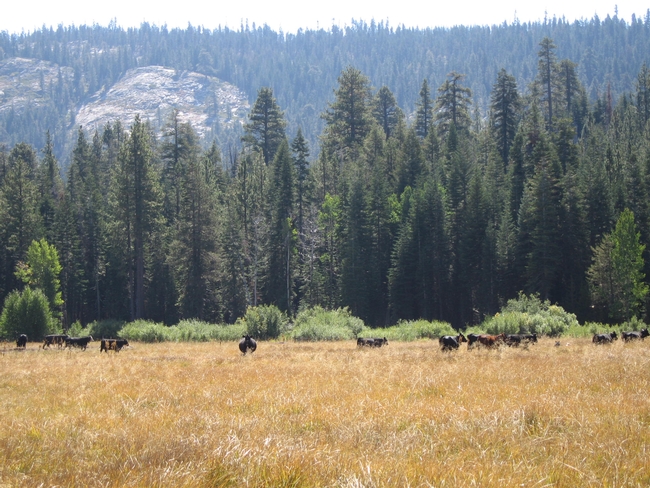
Posts Tagged: rangeland science
UC leads a long tradition of environmental stewardship in California
Stewardship: \'stü-?rd-?ship: the activity or job of protecting and being responsible for something.
In 1862 the Morrill Act was passed to support and maintain colleges of agriculture and mechanical arts, including a later provision that included the donation of public land. As one of the first land grant Universities, the University of California was well positioned to manage agricultural extension across the state as part of the Smith Lever Act of 1915. Today, many people think of California agriculture as strawberries, broccoli and rice; but it is livestock and forestry that dominated California working landscapes in those early days.

This year, the University of California Division of Agriculture and Natural Resources celebrates 100 years of UC Cooperative Extension serving as a research and outreach partner in communities throughout California. For an interesting read on this rich history and the evolution of UC rangeland management perspectives, see M. George, and W. J. Clawson's The History of UC Rangeland Extension, Research, and Teaching: A Perspective (2014). Additionally, UC ANR California Rangelands Website includes a free Annual Rangeland E-book; current project descriptions, publications, and online learning modules: http://californiarangeland.ucdavis.edu/.
Maintaining and improving environmental quality on public and private land requires an informed strategy that encourages stewardship by land owners and community members. In present times, we face the challenges of managing land in the face of growing population, drought, invasive species, and climate change, just to name a few forces of global change. Out of necessity, our broader perspective on land management has shifted to one of “ecosystem stewardship” which is defined as a strategy to respond to and shape social-ecological systems under conditions of uncertainty and change to sustain the supply and opportunities for use of ecosystem services to support human well-being (Chapin et al. 2010). The stewardship framework focuses on the dynamics of ecological change and assesses management options that may influence the path or rate of that change.

The California Naturalist Program uses a science curriculum which includes chapters in forest, woodland, and range resources and management, geology, climate, water, wildlife, and plants. Experiential learning and service projects instill a deep appreciation for the natural communities of the state and serve to engage people in natural resource conservation.

California Naturalists trained at these locations and more are involved in ecosystem stewardship, rangeland management, watershed restoration, and helping outdoor education programs that benefit the environment and people of all ages. Naturalists have donated over 13,000 hours of in-state service in the last three years. These types of stewardship opportunities are essential for the active adaptive management that both public and private lands need to ensure resilience and continue to provide ecosystem services that we all rely on. These trained environmental stewards are an important part of this growing community of practice who not only steward land but pass on critical knowledge about California's natural and managed ecosystems.
Cattle grazing and clean water not mutually exclusive
Cattle grazing and clean water can coexist on national forest lands, according to research by the University of California, Davis.
The study, published June 27 in the journal PLOS ONE, is the most comprehensive examination of water quality on National Forest public grazing lands to date.
“There’s been a lot of concern about public lands and water quality, especially with cattle grazing,” said lead author Leslie Roche, a postdoctoral scholar in the UC Davis Department of Plant Sciences. “We’re able to show that livestock grazing, public recreation and the provisioning of clean water can be compatible goals.”
Roughly 1.8 million livestock graze on national forest lands in the western United States each year, the study said. In California, 500 active grazing allotments support 97,000 livestock across 8 million acres on 17 national forests.
“With an annual recreating population of over 26 million, California’s national forests are at the crossroad of a growing debate about the compatibility of livestock grazing with other activities dependent upon clean, safe water,” the study’s authors write.
“We often hear that livestock production isn’t compatible with environmental goals,” said principal investigator Kenneth Tate, UC Cooperative Extension specialist in the Department of Plant Sciences at UC Davis. “This helps to show that’s not absolutely true. There is no real evidence that we’re creating hot spots of human health risk with livestock grazing in these areas.”
The study was conducted in 2011, during the grazing and recreation season of June through November. Nearly 40 UC Davis researchers, ranchers, U.S. Department of Agriculture Forest Service staff and environmental stakeholders went out by foot and on horseback, hiking across meadows, along campsites, and down ravines to collect 743 water samples from 155 sites across five national forests in northern California.
These areas stretched from Klamath National Forest to Plumas, Tahoe, Stanislaus and Shasta-Trinity national forests. They included key cattle grazing areas, recreational lands and places where neither cattle nor humans tend to wander.
UC Davis researchers analyzed the water samples for microbial and nutrient pollution, including fecal indicator bacteria, fecal coliform, E. coli, nitrogen and phosphorous.
The scientists found that recreation sites were the cleanest, with the lowest levels of fecal indicator bacteria. They found no significant differences in fecal indicator bacteria between grazing lands and areas without recreation or grazing. Overall, 83 percent of all sample sites and 95 percent of all water samples collected were below U.S. Environmental Protection Agency benchmarks for human health.
The study noted that several regional regulatory programs use different water quality standards for fecal bacteria. For instance, most of the study’s sample sites would exceed levels set by a more restrictive standard based on fecal coliform concentrations. However, the U.S. EPA states that E. coli are better indicators of fecal contamination and provide the most accurate assessment of water quality conditions and human health risks.
The study also found that all nutrient concentrations were at or below background levels, and no samples exceeded concentrations of ecological or human health concern.
The study was funded by the USDA Forest Service, Region 5.
The study has been covered by Bloomberg, Cattle Network, Progressive Cattle, Science Daily and AgWeb.
